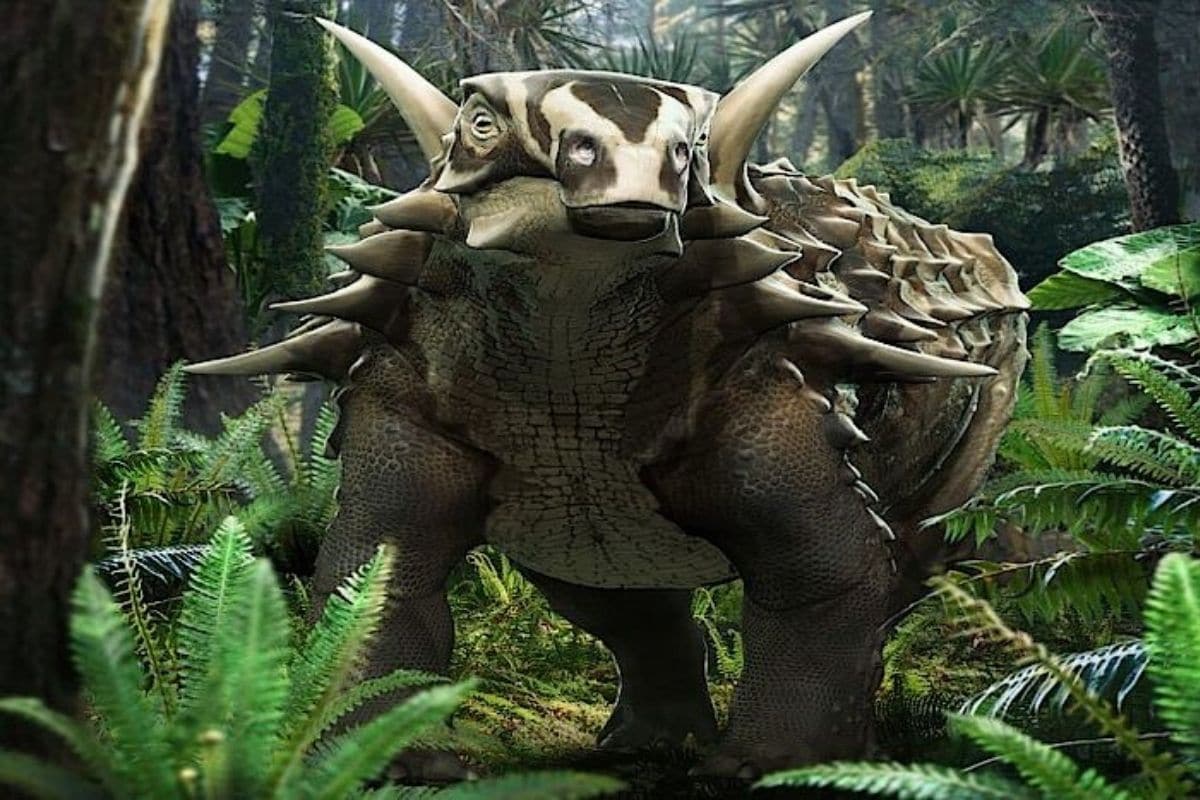

Researchers arrive at surprising new insights about an armored Ankylosaurus: it was slow and deaf.
Millions of years ago, several special dinosaurs lived on Earth. One of these is the Ankylosaurus; an armored, herbivorous specimen. Using micro-CT, researchers have managed to get a closer look at a fossilized braincase of a rather dorky Ankylosaurus. And that provides surprisingly new insights.
Ankylosaurs are sometimes jokingly referred to as “living fortresses.” And that’s not for nothing. The body of these dinosaurs was covered with bony plates and spines: they are known for their broad armored backs made of bone plates. In addition, some ankylosaurs defended themselves with a special club that sat on the tip of its tail.
While we are learning more and more about the Ankylosaurus thanks to various fossil finds, some aspects of its lifestyle are still puzzling. In a new study published in the journal Scientific Reports, researchers decided to look – literally – inside the head of an Ankylosaurus.
fossil braincase
The research team examined the fossil remains of Struthiosaurus austriacus: a relatively small specimen that meandered the Earth during the late Cretaceous period. The remains of this dinosaur were discovered in a coal mine near the Austrian town of Muthmannsdorf, just south of Vienna. In particular, the researchers determined the small, 50 mm large braincase of Struthiosaurus austriacus to undergo an inspection, in order to gain more knowledge about the anatomy and lifestyle of this special dino. And with success. Because the results reveal new insights about his hearing.
The researchers come to a surprising conclusion. For the examined Ankylosaurus appears to be equipped with a very short layera; the shortest ever found on a dinosaur.
Deaf
The lagena is part of the inner ear and plays an important role in sound processing. The longer the lagena in relation to the skull, the better the animal in question can hear. The short layer of Struthiosaurus austriacus therefore indicates that he probably heard very little. While many dinosaurs probably lived in groups, at least some Ankylosaurs seemed to prefer a solitary existence because of this poor hearing ability.
Slow
Incidentally, the dino was not only deaf; he was also possibly quite slow. For example, the flocculus – an organ that plays an important role in the fixation of the eyes during movements with the head, neck and body – appears to be particularly small. It means he probably didn’t have competitors in his sights that quickly. “Unlike its North American relative Euoplocephalus, which was equipped with a mace and a clear flocculus, familiar Struthiosaurus austriacus possibly prefer his armored armor for protection,” said researcher Marco Schade. Together with the semicircular canals in the inner ear, this indicates an exceptionally slow lifestyle of the Austrian herbivore.
Overall, the results indicate that the perhaps somewhat dodgy Struthiosaurus austriacus was both slow and deaf. An interesting discovery that provides new insights into the evolutionary history of dinosaurs and the world they lived in.
Source material:
“Within a dinosaur’s head: ankylosaur was sluggish and deaf” – University of Vienna
Image at the top of this article: Fabrizio De Rossi